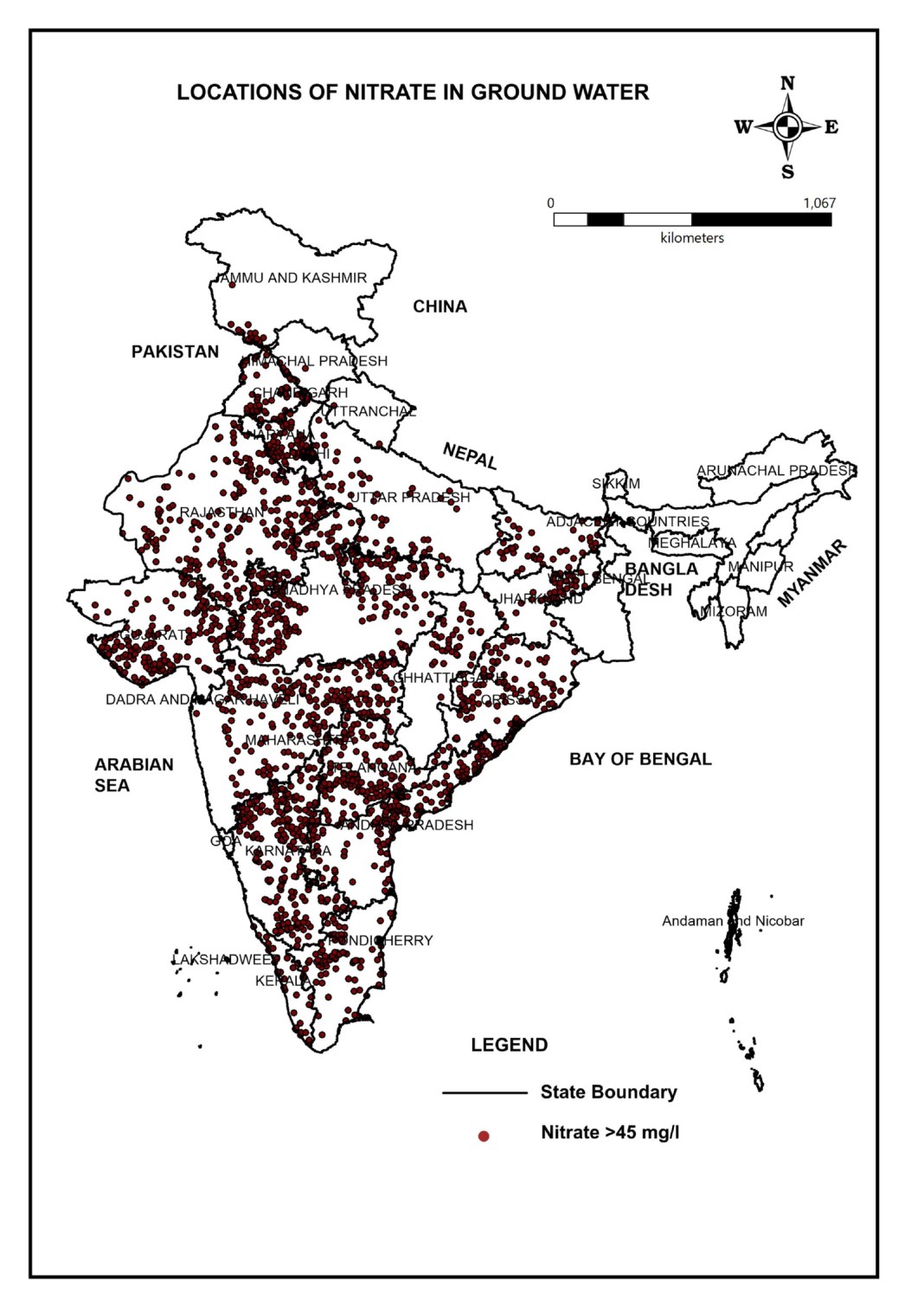Gandhinagar, 29 November 2020
The groundwater of 12 districts of Gujarat is arsenic. Arsenic is considered killer poison. Arsenic, lead, selenium, mercury and fluoride, nitrate etc. have a bad effect on health. Arsenic is a cause of dangerous disease like cancer. Many can cause genetic defects. In 12 districts of Gujarat, Amreli, Anand, Bharuch, Bhavnagar, Dahod, Gandhinagar, Kutch, Mehsana, Patan, Rajkot, Surendranagar, Vadodara, arsenic in chemical waste ranges from 0.01 to 0.05 mg per liter. The concentration of arsenic in groundwater samples in Gujarat is BIS, exceeding the allowable limit of 0.01 mg per liter.
Killer poison, Arsenic is found in 100 m deep groundwater.
Arsenic is a naturally occurring element that comes in contact with rocks, soil and water. Arsenic is recognized as a toxic substance and is considered hazardous to human health.
Drinking its water does not show any immediate effect. Skin becomes dry due to continuous use of water for two years. Used to kill insects in agriculture. Through which that substance goes into every man’s body. Used in home colors that can go into the body. When the ratio is high, it becomes harmful to the body.
What health risks
Drinking water contaminated with arsenic minerals poses major health risks. Arsenic causes paralysis in body cells, damaging the intestines. Damage to tissues. The spread of skin pigmentation, such as changes in pigment and keratosis, are symptoms of chronic arsenic-toxicity, with different effects in many children exposed to arsenic in many areas. Lung thickening or wounds occur in children. Intellectual activity has its side effects. Is a genetic effect. Skin lesions, lung diseases and intellectual activity are impeded. Outbreak of dermatitis. The skin is affected on the abdomen, back, neck, legs and other places. The pain is accompanied by the experience of unbearable itching. The bones become hollow. The teeth begin to change color. Mental development of children is also affected. People’s bodies become ugly, face changes color, scars on hands, feet and neck become scars like eczema.
What use in industry
Arsenic is shown by Kautilya in ‘Arthashastra’. It was used to erase the miswriting of handwritten books. It also originates with ores of copper, lead and other metals. Used to make glass and protect leather articles. Useful for coloring. Addition of small amounts of arsenic to copper prevents decay.
Drug consumption
Arsenic is used as a particle for the treatment of anemia, neuropathy, arthritis, malaria, obesity, dysmenorrhea, and other diseases.
Abundant use in agriculture
Fungal-fungal diseases, pesticides are being used extensively in agricultural crops.
Hot spots of Gujarat
The district has arsenic milligram per liter.
1 Amreli, Zafarabad, 0.02
2 Anand, Borsad, Ras 0.01
3 Anand, Khambhat, Dali 0.01
4 Bharuch, Ankleshwar, 0.01
5 Bharuch, Hansot, Jetpur 0.02
6 Bharuch, Hasot, Utraj, 0.03
7 Bharuch, Jambusar, poet, 0.01
8 Bharuch, Jambusar, Sindhav, 0.01
9 Bharuch, Vagra, Blacksmith, 0.02
10 Bhavnagar, Ghogha 0.01
11 Bhavnagar, Vallabhpur, Ayodhyapuram 0.01
12 Dahod, 0.03 in the forest
13 Gandhinagar, Setrapa 0.02
14 Kutch, Wrappers, Cud 0.02
15 Mehsana, Bahucharaji, Dharapura 0.03
16 Mehsana, Kadi Vidj 0.02
17 Patan, Chainsma, Dharmoda 0.02
18 roofing, roofing 2 2 0.02
19 Patan, Radhanpur, Radhanpur-2 0.02
20 roofing, ferrule, pearl
21 Rajkot, Rajkot-1, 0.01
22 Surendranagar, Dasada 0.02
23 Surendranagar, Sayla, Sudama 0.
24 Vadodara, Dabhoi, Vega 0.01

Bad condition in the country
10cr people in 12,577 settlements across the country are receiving high levels of fluoride in their drinking water. In March 2016, the Government of India announced Rs 800 crore for water purification in arsenic-affected and 12014 fluoride-affected settlements. 28,000 fluoride and arsenic affected settlements drink contaminated water. The central government has announced to spend Rs 25,000 crore for this in the current budget. Has announced to provide tap water to every household in the country by 2030.
Arsenic spots in ground water in India
The first case of arsenic in ground water was seen in 1980 in West Bengal, India. The most affected areas are Alda, Murshidabad, Nadia, North 24 Parganas and South 24 Parganas and the western part is Howrah, Hooghly and Bardhaman districts in the eastern part of Bhagirathi River.
Arsenic contamination has been found in ground water, apart from Gujarat, West Bengal, Assam, Bihar, Chhattisgarh, Haryana, Jharkhand, Karnataka, Punjab, Uttar Pradesh and West Bengal.
Arsenic occurrence is found in alluvial formations in the states of Bihar, West Bengal and Uttar Pradesh, but in the state of Chhattisgarh, it is particularly prevalent in the volcanic rocks of the N-S trending Dungarg Kotdi ancient region. Reports of this have also come in Assam’s Golaghat, Jorhat, Lakhimpur, Nagaon, Nalbari, Sibsagar, Sonitpur districts.
 ગુજરાતી
ગુજરાતી English
English





